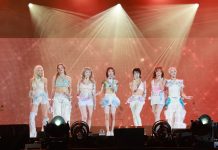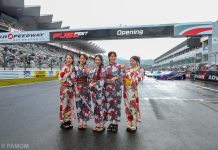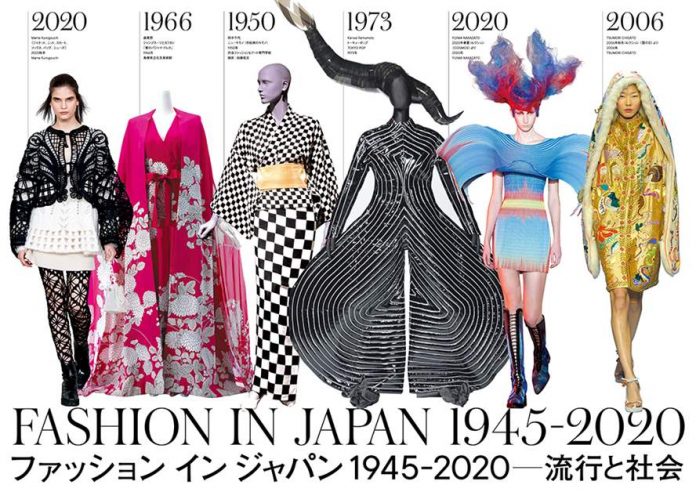From Monpe to the sustainable near future,
Tracing the history of Postwar Japanese Fashion,
The world’s first large-scale exhibition!
Since the 1970s, Japanese fashion designers have gained worldwide reputation. Until now, Japanese fashion has been talked about as if it was suddenly born with them, but that is not the case. In the Meiji period( 1868-1912) Japan became a modern nation and western-style dress was used, and after World War II, Western-style dress became common and developed a unique culture of dress.
In this exhibition, we will look at the unique clothing trajectory, especially in postwar Japan, from the designer side that creates clothes and ideas, and the consumer (receptive) side, which sometimes creates the movement of the times by wearing clothes, and also refers to the media that have become mainstream in each era, such as newspapers, magazines, and advertisements. This is the world’s first major exhibition that unravels cutting-edge trends in Japanese fashion based on clothes, which have never been introduced together before, along with social backgrounds.
A Japanese fashion exhibition displaying clothes and other items from World War II to the present day is being held at the National Art Center in Tokyo through Sept. 6.
From state-mandated war clothing of the mid-1940s to the Lolita look and avant-garde, “Fashion in Japan 1945-2020” offers a fascinating retrospective through more than 800 exhibits, including clothing, magazines and videos.
“What is unique about this exhibition is that it unravels the history of Japanese fashion over such a long period of time,” said Yayoi Motohashi, a curator at the center.
The exhibition begins with photographs from the 1920s showing city women — then called “modern girls” — who imitated styles worn by American movie stars. When Japan went to war in the 1940s, men donned kokuminfuku, or state-mandated uniforms, and women monpe work pants. Because the clothes offered more freedom of movement than a kimono, people gradually started to shift away from traditional apparel.
After the war, dressmaking suddenly became popular, resulting in a proliferation of fashion magazines. When Japanese cinema began its golden age in the mid-1950s, the styles donned by stars on the screen influenced fashion on the street. The exhibition traces this development with clips from the 1953 movie “Kimi no na wa” (“What Is Your Name?”) and “Kurutta kajitsu” (“Crazed Fruit”) in 1956.
In the 1960s, cheap wrinkle-free material such as nylon and polyester was widely available, resulting in an explosion of off-the-rack clothing at the expense of custom-made designs.
The exhibition traces how the emergence of color TVs in the home opened the door to styles worn by Western youth. Miniskirts fashionable in the U.K. became a hit with Japanese women while the Ivy League look went mainstream with men.
Highlights of the 1970s section of the show feature stage costumes designed by Kansai Yamamoto for British rock star David Bowie, including a striped jumpsuit. Another wild Yamamoto creation on display is a colorful asymmetric knitted leotard.
Yamamoto was among a slew of Japanese designers who enjoyed fame overseas in the 1970s. Kenzo Takada opened his boutique in France and Issei Miyake rolled out a collection in the U.S. The launch of the women’s lifestyle magazine An-An and men’s publication Popeye heralded a shift toward teenagers and young adults as the center of the Japanese fashion universe.
In the 1980s, labels such as Comme des Garcons and Yohji Yamamoto took off thanks to their bold and iconic designs. Singer Seiko Matsuda, known for her distinctive hairstyle, and other idols stormed the fashion scene. Among the clothes on display are stage outfits worn by pop singer Kyoko Koizumi in “Kohaku Uta Gassen” (“Red and White Song Battle”), the biggest end-of-year TV show in the country.
Fashion in the 1990s began to identify with specific neighborhoods and regions. For example, Undercover and other brands shown in the exhibition started to become associated with a section of Tokyo’s trendy Harajuku district.
Kogals, young girls eager to imitate pop diva Namie Amuro’s signature look of long straight hair, platform knee-high boots, white “loose socks” and thin eyebrows, flocked to Tokyo’s Shibuya district. Especially charismatic shop staff and famous amateur models turned into fashion icons.
In the 2000s, the Japanese pop culture of kawaii, or cute, caught on overseas. With the advent of social media in the 2010s, fashion in the country greatly diversified, with many latching on to niche fashions rather than following mainstream trends. At the same time, a number of luxury brands began to embrace street fashion.






















